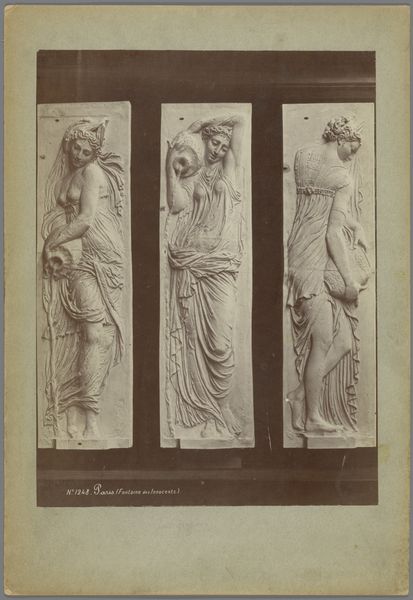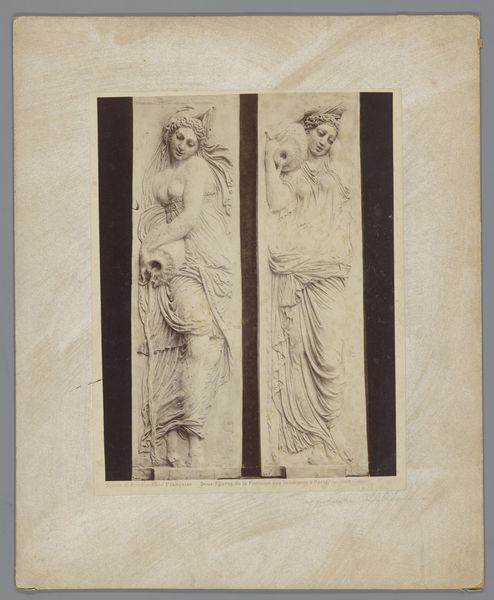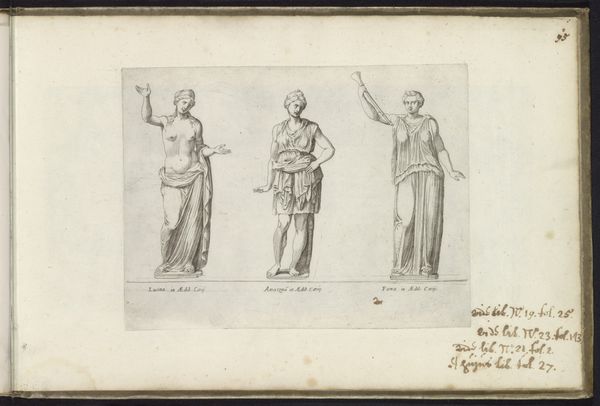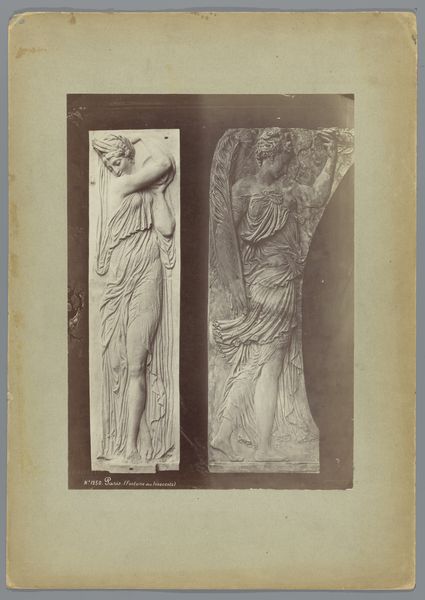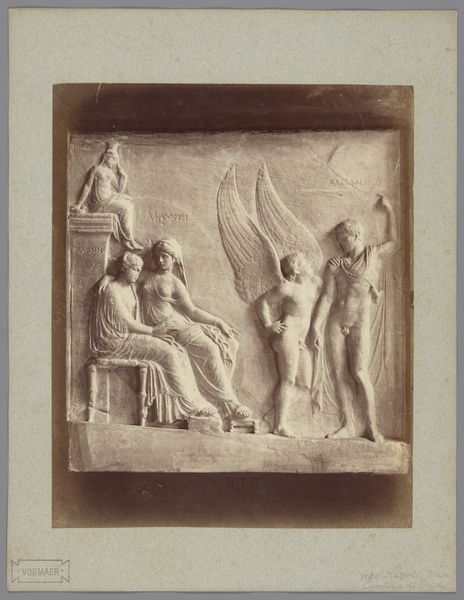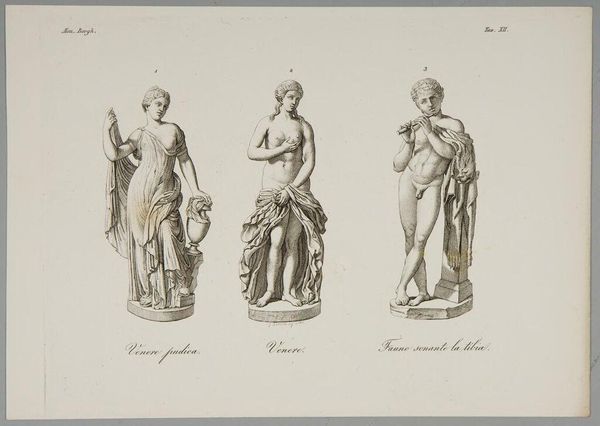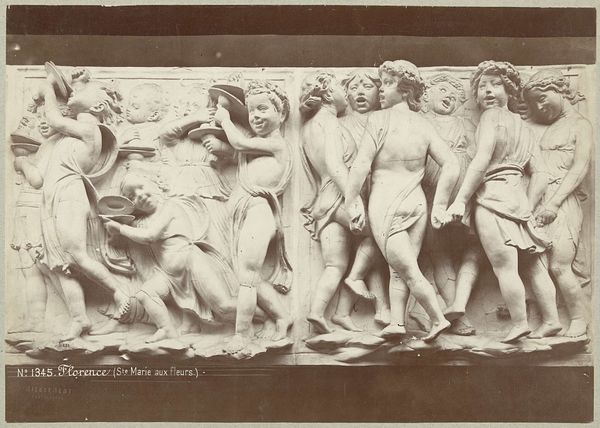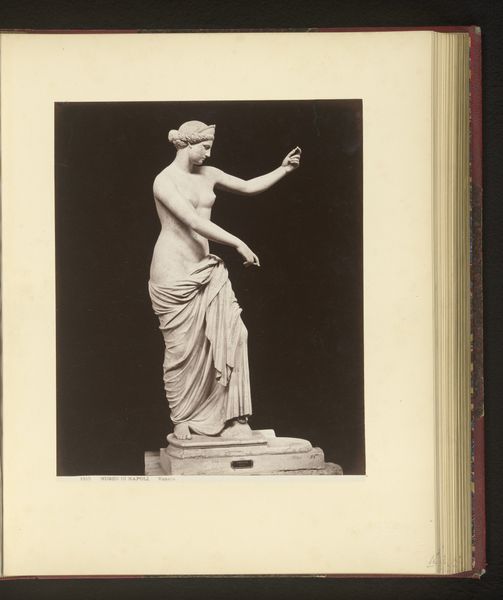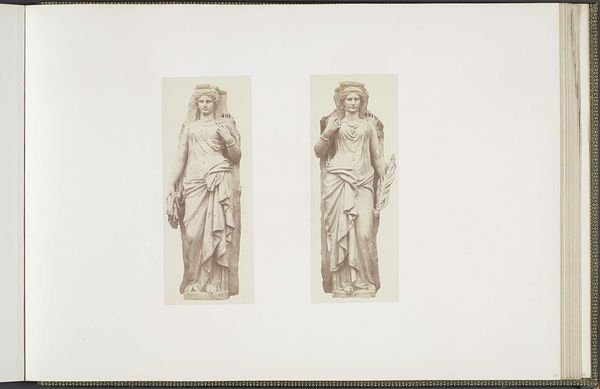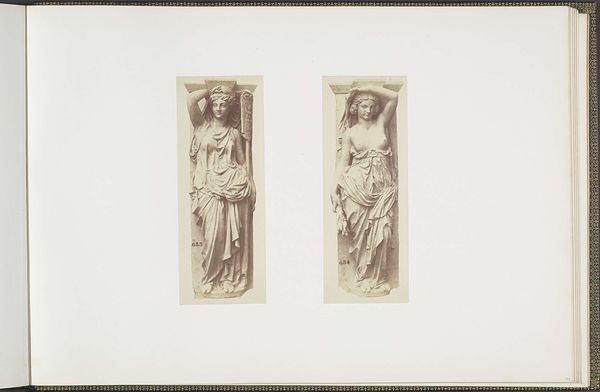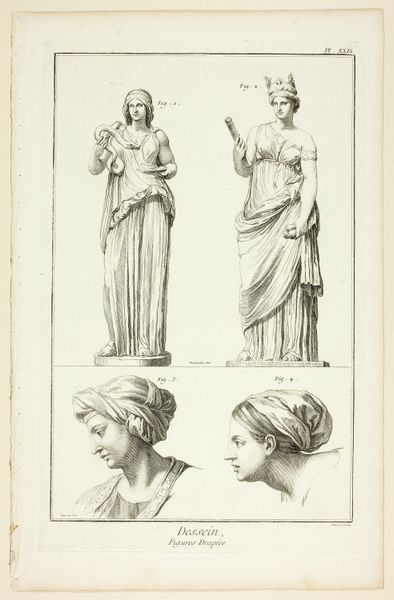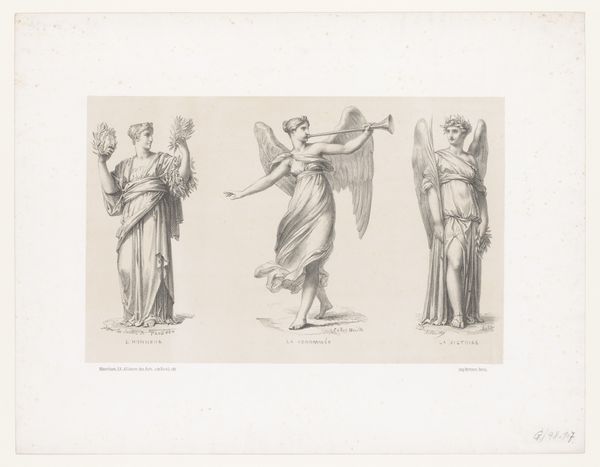
Vier gipsafgietsels van de reliëfs van de Fontaine des Innocents te Parijs, voorstellende vrouwen met waterkruiken c. 1875 - 1900
0:00
0:00
Dimensions: height 253 mm, width 341 mm
Copyright: Rijks Museum: Open Domain
This photograph shows four plaster casts of reliefs from the Fontaine des Innocents in Paris. These figures of women, each with water jugs, embody classical ideals of beauty and serenity, connecting us to ancient traditions of nymphs and water goddesses. The motif of the water carrier resonates across cultures and epochs. We see echoes in ancient Greek hydriaphorai, figures bearing water vessels in religious processions, symbols of purity and life-giving sustenance. This archetype appears even in ancient Egyptian art, demonstrating how this image taps into a collective memory of water as a vital force. Over time, this symbol has shifted. Consider its evolution: from sacred ritual to purely aesthetic form, yet it always retains echoes of its original significance. The image of a young woman with a vessel evokes deep, subconscious associations with nourishment, fertility, and the elemental power of water. It touches us on an emotional level, reminding us of the primal connection we all share with the natural world. In this photograph, the water carrier motif showcases a cyclical progression through time, reappearing, evolving, and accumulating layers of meaning.
Comments
No comments
Be the first to comment and join the conversation on the ultimate creative platform.
